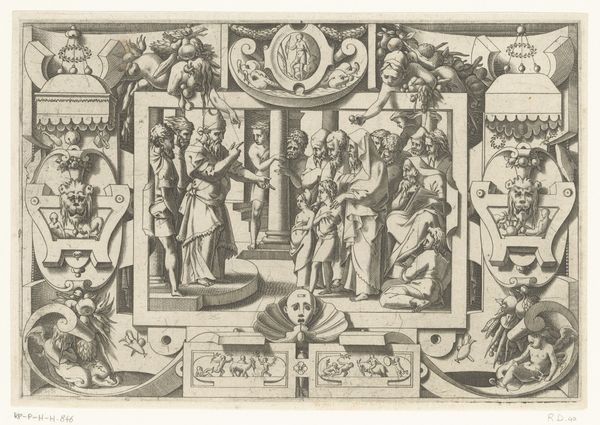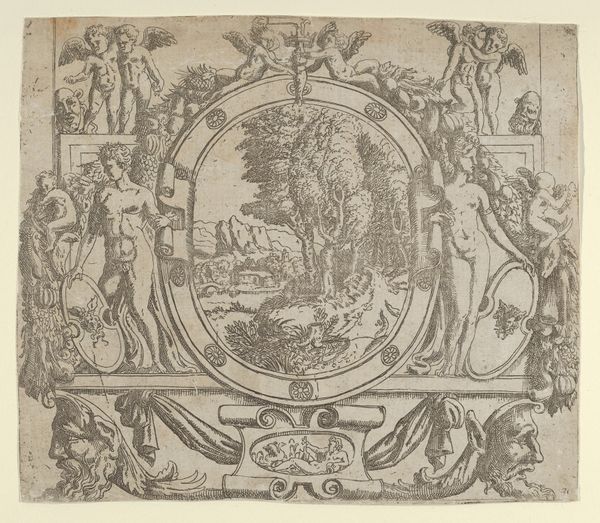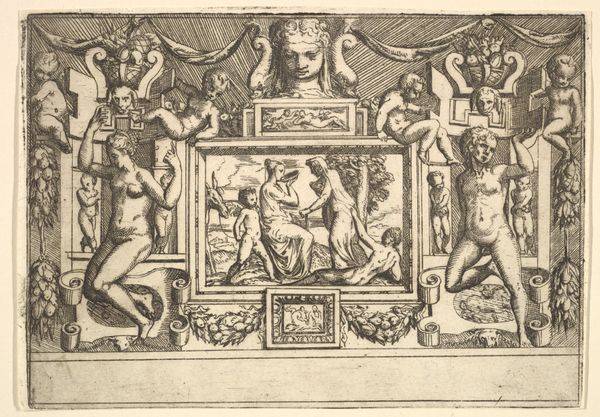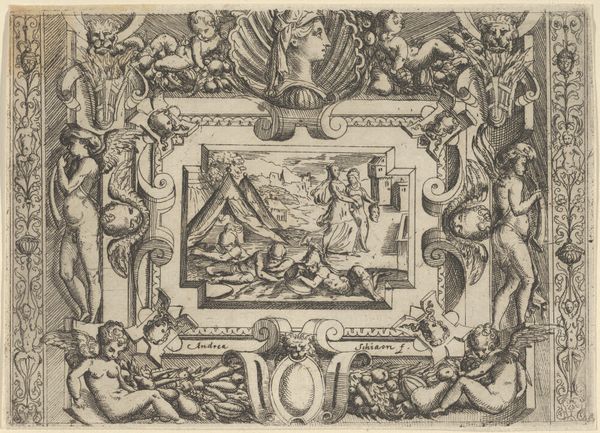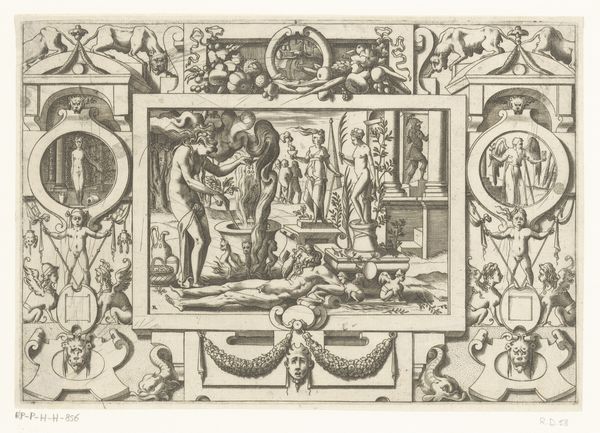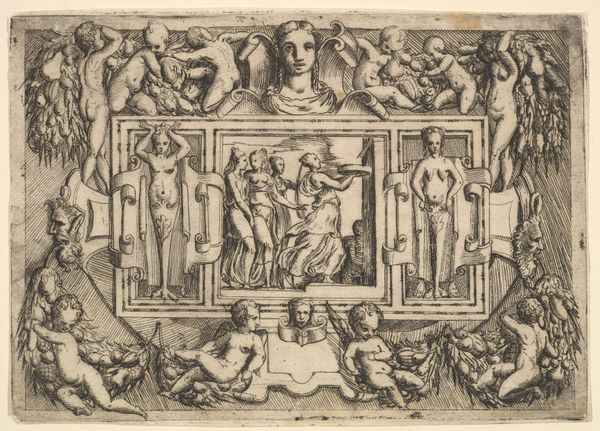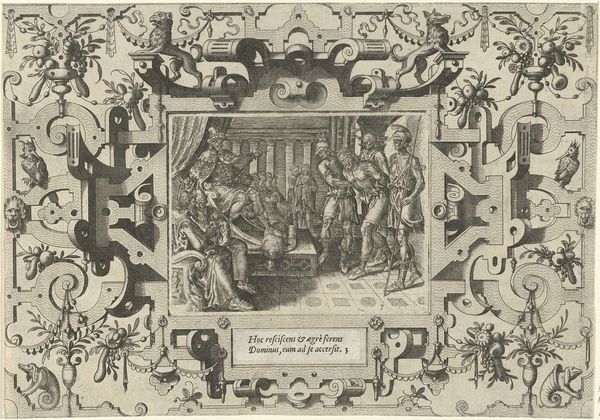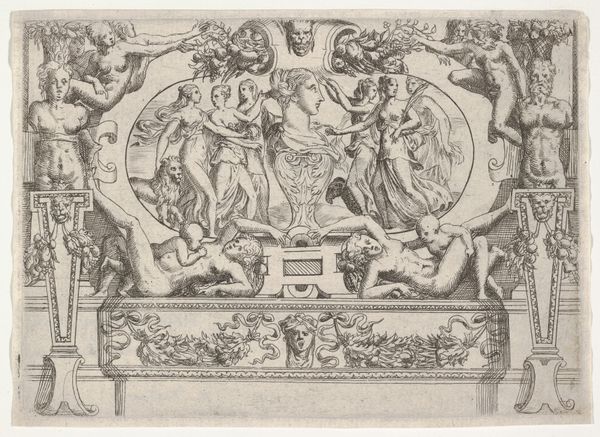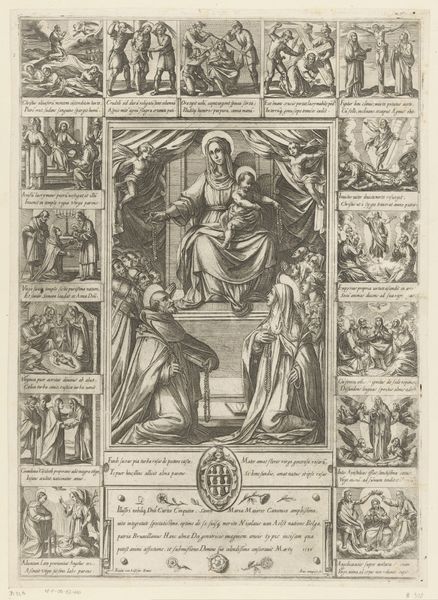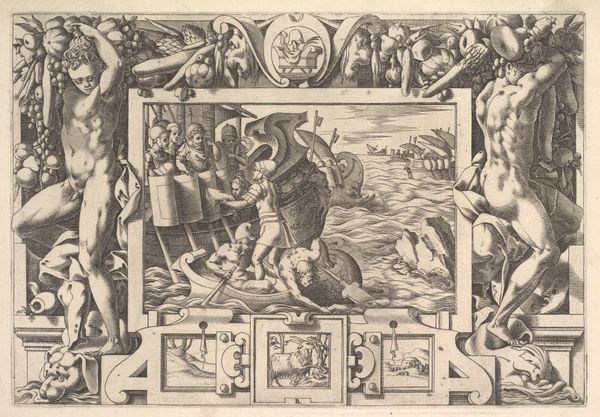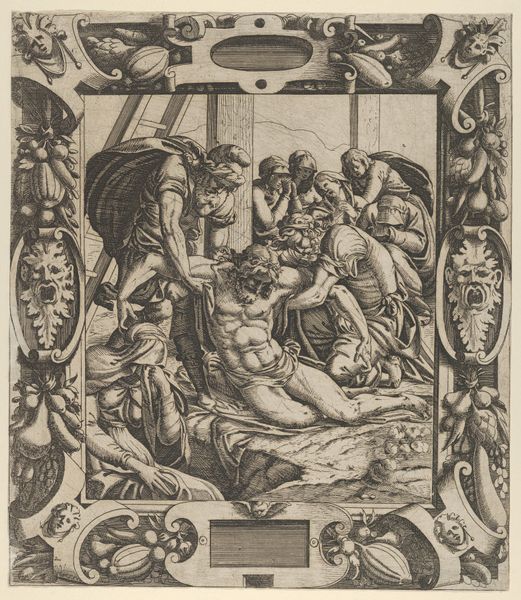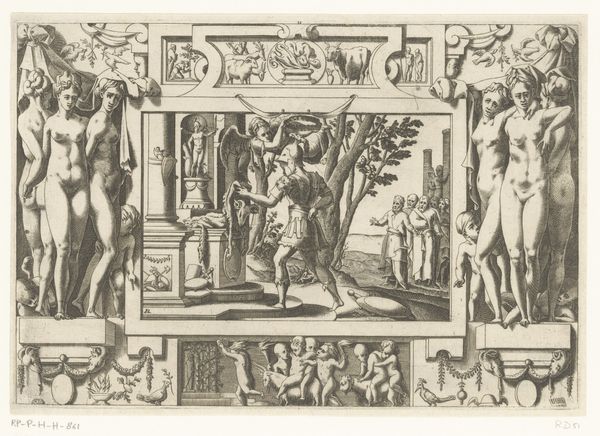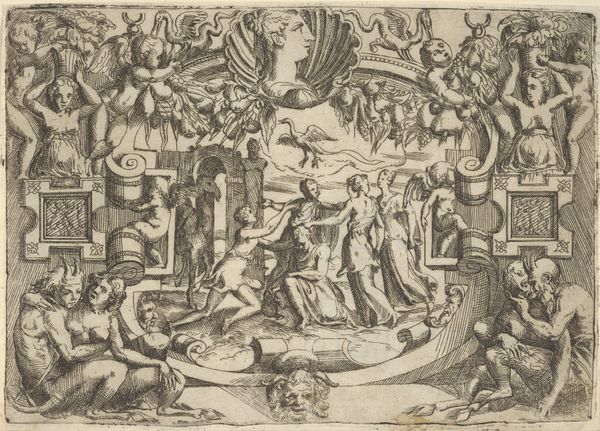
A man and woman offering a platter of coins to a king seated on a throne, set within an elaborate frame 1535 - 1580
0:00
0:00
drawing, print, pen, engraving
#
drawing
#
pen drawing
# print
#
pen illustration
#
pen sketch
#
figuration
#
line
#
pen
#
history-painting
#
italian-renaissance
#
engraving
Dimensions: Sheet (Trimmed): 5 1/16 × 7 1/16 in. (12.8 × 18 cm)
Copyright: Public Domain
Editor: This engaging print, "A man and woman offering a platter of coins to a king seated on a throne, set within an elaborate frame," was created sometime between 1535 and 1580 by Battista Angolo del Moro, employing pen and engraving. What strikes me is the stark contrast between the detailed figures and the abstract frame surrounding them. How do you interpret the relationship between the historical scene and the decorative elements? Curator: It's vital to see how material processes like printmaking could elevate and democratize classical narratives. Notice how the relatively inexpensive method of engraving made accessible scenes previously confined to wealthy patrons. How does this contrast with the actual scene represented, depicting royalty accepting tribute, highlighting societal stratification and unequal labor? Editor: That's a fascinating tension. It’s like the medium contradicts the message! Curator: Precisely. Think of the social conditions which facilitated this print. Were guild systems involved? What workshops handled the engraving and distribution of these images? The choice of a pen and engraving – cheap and relatively reproducible at the time – positions this work firmly within a specific economy of artistic production and dissemination. Editor: So the availability of these prints could have had a ripple effect, impacting perceptions of wealth and power? Curator: Absolutely. This seemingly simple pen illustration contains within it a whole network of labor, distribution, and potential ideological impact. These lines weren't just sketched; they were produced, sold, and consumed within a specific socioeconomic fabric. Do you notice the repetition and idealization of form? Is the craft emphasizing consumption? Editor: I never really thought of art in terms of labor before. It's changed my perspective. Curator: Exploring the tangible making of art is often more interesting than focusing on symbolic meaning, offering a tangible lens for examining art's entanglement within larger historical and societal structures. It pushes us to look beyond individual artistic genius and understand art as collective work.
Comments
No comments
Be the first to comment and join the conversation on the ultimate creative platform.
